If Amaryllis belladonna and Japanese anenome are summer-killing plants, the Prunus cerasifera puple-leaf flowering plum is the winter-killer.
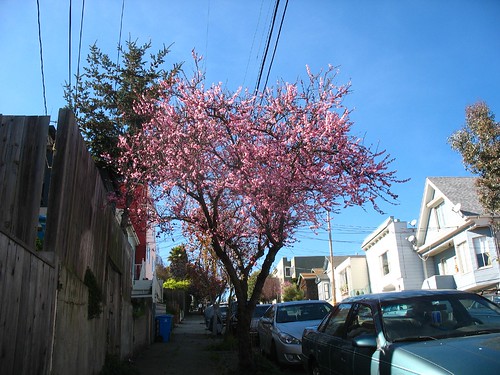
This is The Most Commonly Planted Street Tree in San Francisco. It's everywhere. Familiarity does breed contempt, but it's nice this time of year, or when it's planted next to something with very bright green foliage.
Otherwise, Argh.
Junipers are another hard-to-take plant, but I actually like them once they get like this.
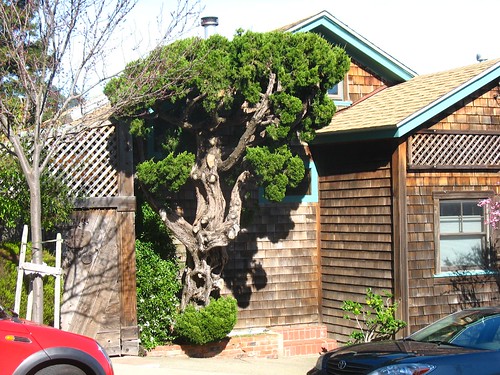

I like this Agave. When the leaves point down, the terminal thorns aren't so menacing.
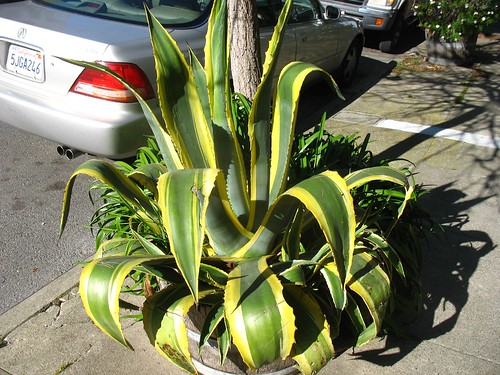
I'm on my way to the sandwich store. A shop on the main street started selling cut flowers and plant material awhile ago.
Acacia baileyana?
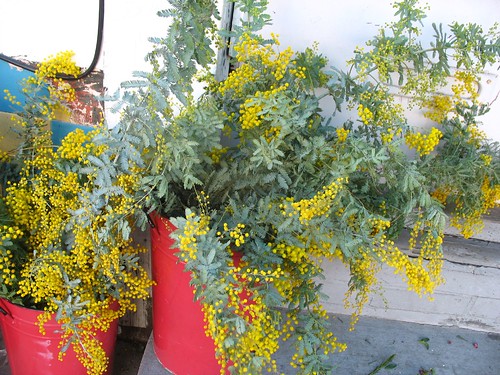
As a gardener, I just feel uncomfortable buying flowers like this.
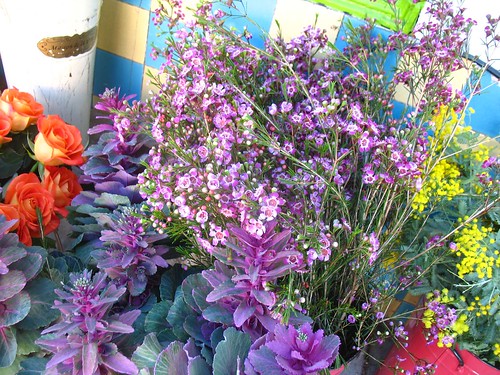
If I'm going to call myself a gardener, shouldn't I be content with using stuff from my own garden?
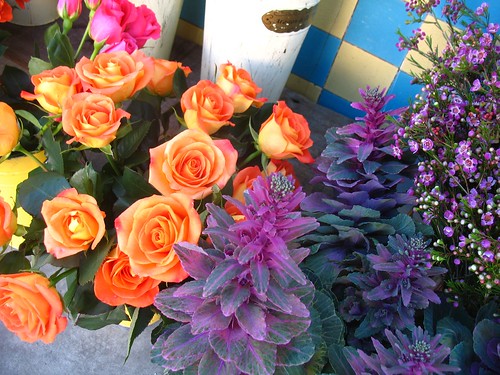
Or is that a little too stringent?

Well, the fact is I can't really justify spending money on flowers right now, and I've never been an ardent practitioner of "bringing things in".
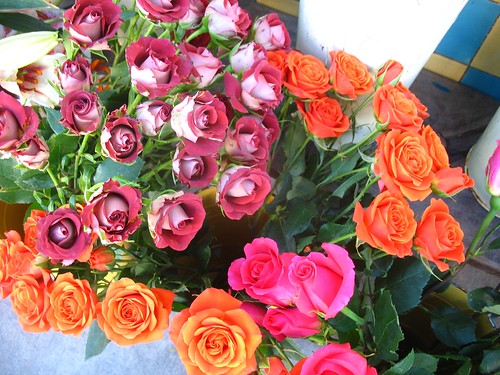
Maybe this year I'll try to get in the habit using what's in the garden.
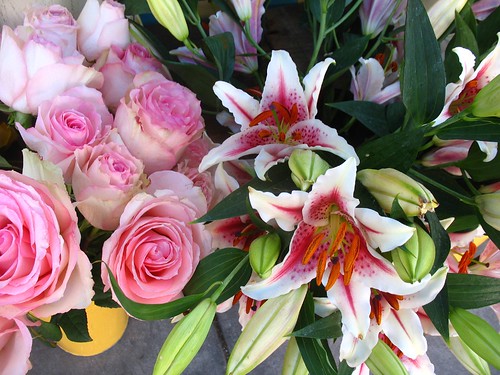
And if I like it, I'll see where it goes.

It could be another garden blogger meme. Friday Bouquet Day, or something.
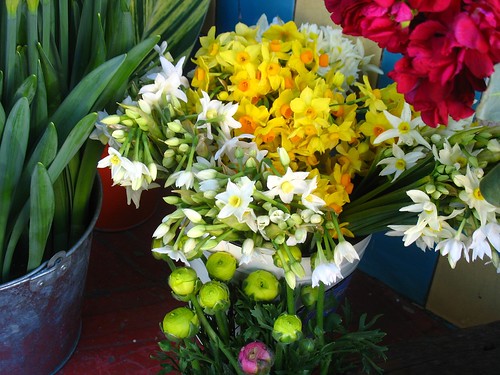
They're finally starting to fix the streets. San Francisco streets are in terrible condition. And I'm sure they're using bond money to pay for this work. Heaven forbid we use general revenues to pay for infrastructure! No, no. Must issue a bond. This is what happens when 2/3 of the city rents instead of owns. Everything gets paid for with bond money. I voted for bonds more when I rented than I do now that I own. Nowadays I vote no on everything.

This sandwich place rules.

Prices are going up everywhere.

Equipped with $3 sandwich, I'm off.
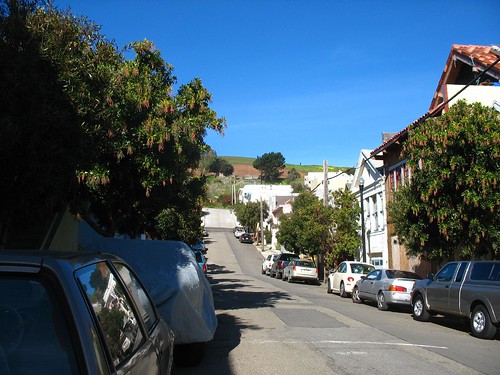
I can use maximum zoom and see the pea patch from here. All that yellow is Oxalis pes-carpae.
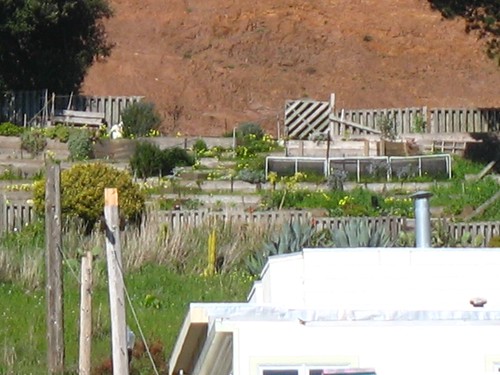
Like Oxalis, this Chasmanthe is with us for a long time in the winter.

And there's a yellow form too.
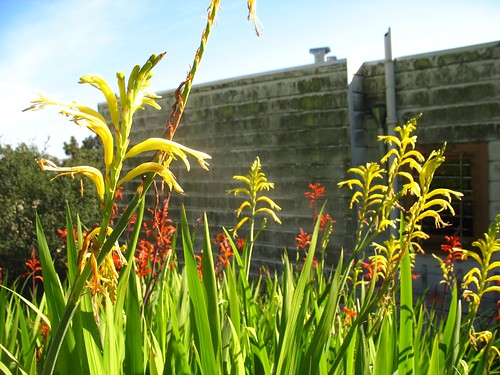
Some people think the Oxalis pes-carpae is sterile and propagates by offsetting bulbils. If it's sterile, then the whole species is a single clone, right? Seems like that would be easy to determine.
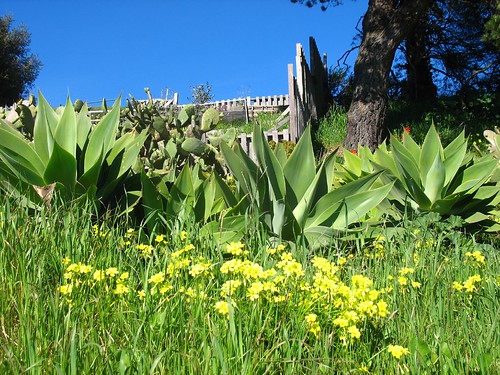
As far as weeds go, at least it's not completely hideous. Do you suppose it's cultivated in a native garden somewhere? Maybe it's a sterile hybrid. Like a donkey, but a plant. In which case, it's lucky to have inherited the gene for bulbil-propagating. And we're unlucky.
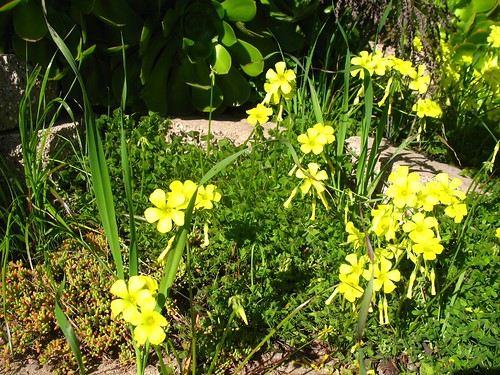
I weeded a big pile of it out of my patch, and harvested some potatoes. I can use these potatoes to make the asparagus pancake this weekend.
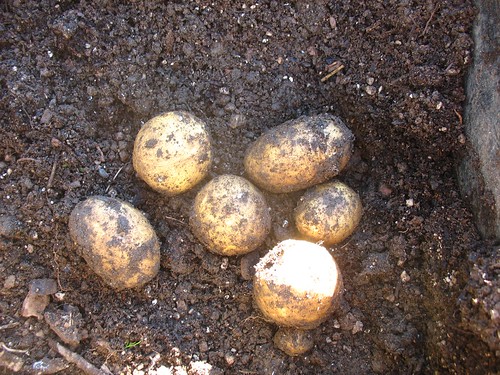
This came up when I dug the potatoes. Will it grow if I stick it back in the ground and water it?
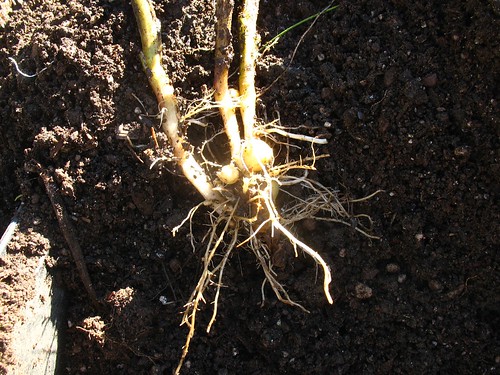
I dug this little piece of glass up when I started gardening here a year ago. I put it on the wall thinking I'd eventually throw it away, but it has sat here, like this, without moving, or being moved by anyone or anything ever since I put it here. Amazing.
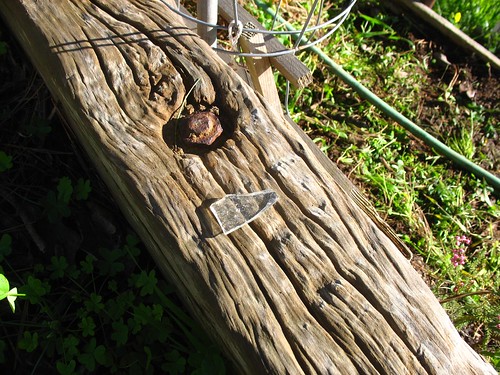
Alyssum is something I would never plant, but I inherited the plot with some plants. This and a geranium are all that remains. They thrive on neglect.
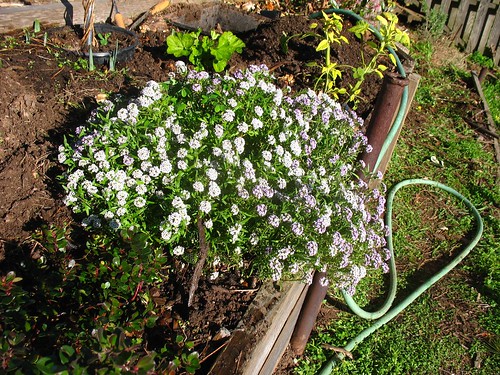
Besides growing potatoes (which I do a little bit at home too), there's really no reason for me to have a community garden plot. I don't have time to maintain something nice up here all year long. The site itself is too windy and forlorn to be productive. I end up sticking things here that I don't have room for at home. Some daffodil bulbs.
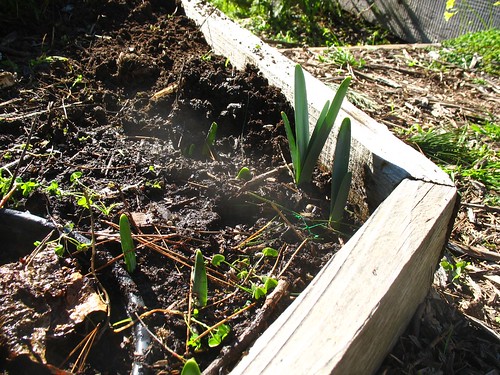
And this thing below that someone put out on the sidewalk--the urban way to get rid of your stuff. Put it out on the sidewalk. "Yeah, I'll put that in my community garden plot." I planted a little snap pea seedling at the base of it today. I'm not sure what grew on it before, but it came with the remnant twiggy stuff. I decided to leave it
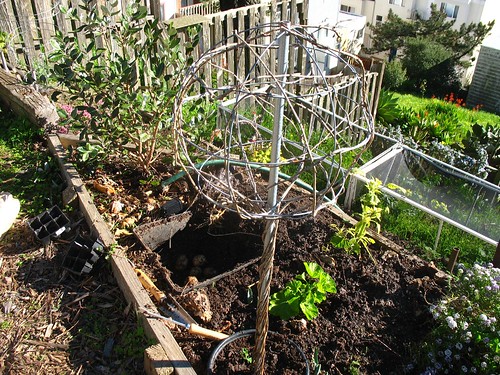
I think it looks like an antenna. It matches the antennas you see on rooftops from the garden, as well as the big radio tower stuff on top of Bernal Hill.
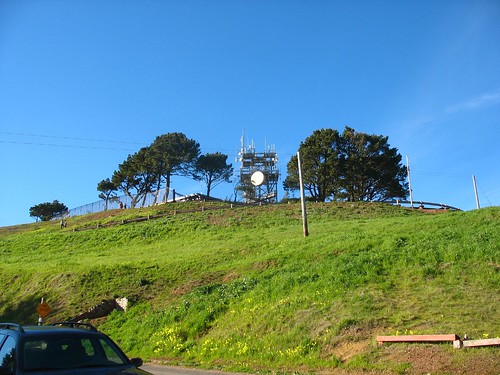
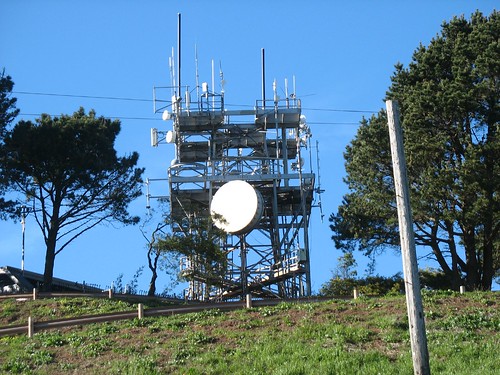
I have to pick up Guy's dry cleaning today, so time to go. But we'll take the long way home.
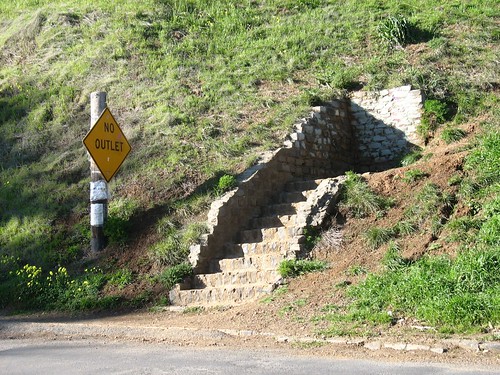
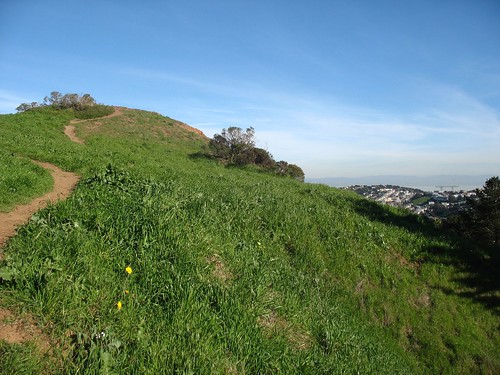
Bernal Heights is northwest of the intersection of Highway 280 and Highway 101.
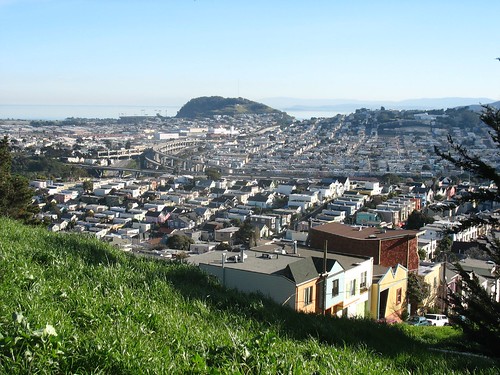
We're looking south. That road goes all the way to Los Angeles where it disappears in the tangle of freeways near Santa Monica. I'm not sure what its ultimate fate is.

Looking east, Oakland.
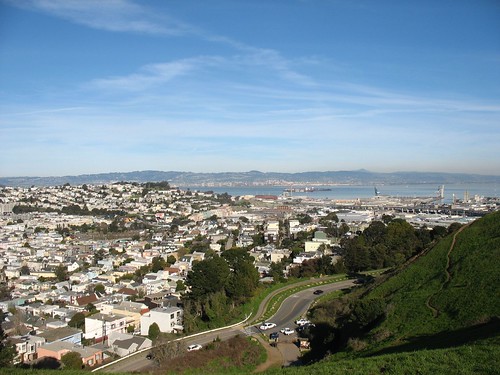
Zooming in on downtown Oakland...that's, what, 10 miles as the crow flies?

Mount Diablo is the tallest peak in the Bay Area at 3,849 feet. Elsewhere, the coast ranges rise to about 5,000 feet. That's about thirty miles away from Bernal Heights as the crow flies.
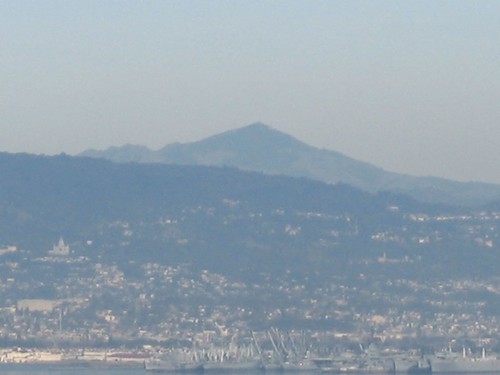
Turning north, we see downtown San Francisco.
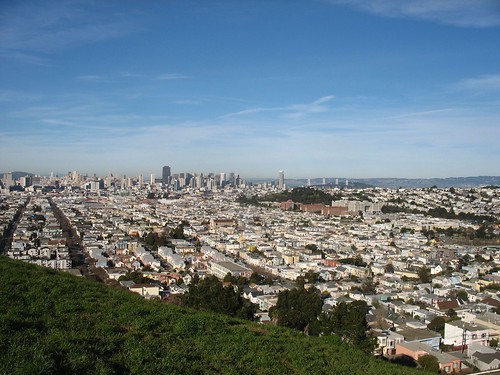
Our newest skyscraper. Everyone's wondering how it got approved. It went up fast.

Downtown.

Nob Hill.

Pacific Heights.
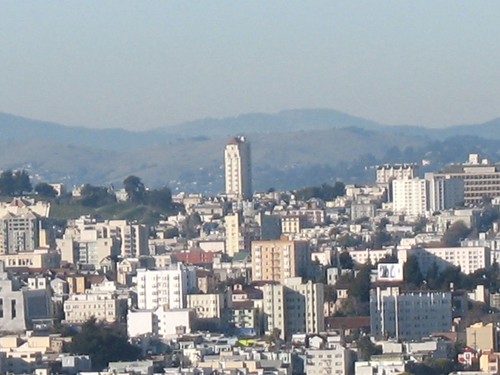
A U.S. mint. I think they just make commemorative stuff there now. They should probably shut it down, but what to do with the building?

GG Bridge.

Bernal Hill is very steep. You can see it's a 45 degree angle.
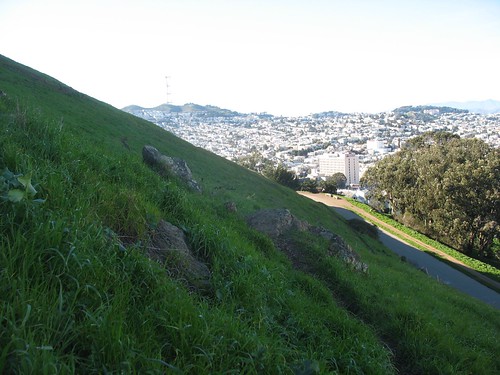
Miners lettuce grows freely on the shaded north face.
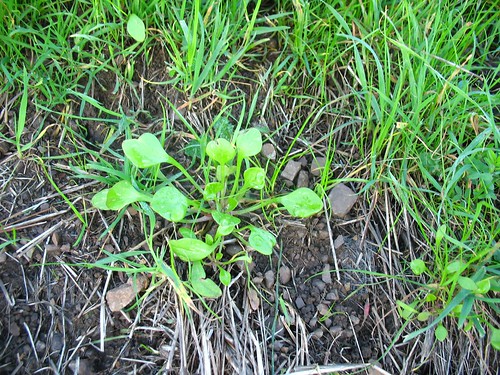
Finally some yellow that is not oxalis.
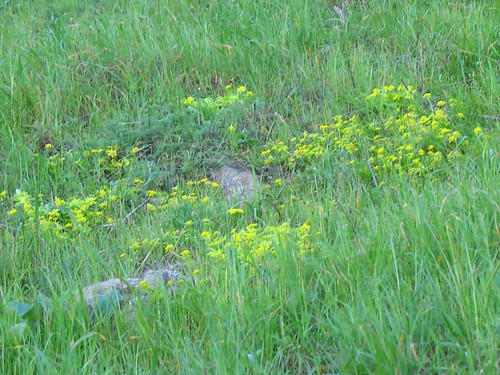
But what is it?
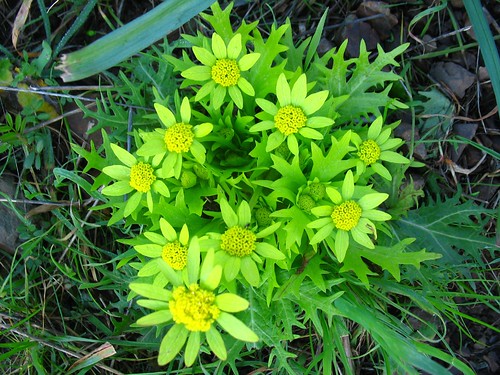
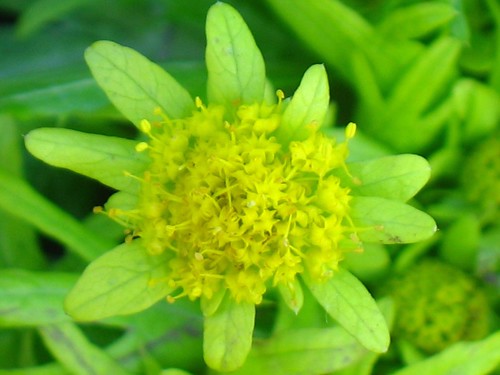
And what's this?
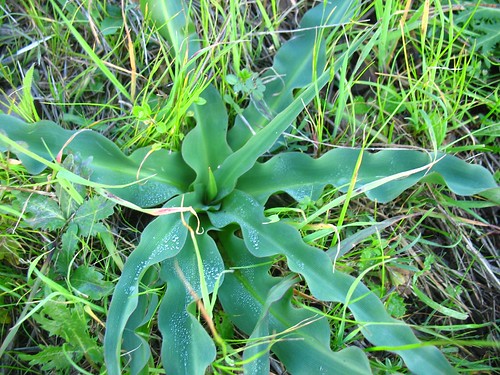
I know what this is. This is Ranunculus californicus. Sweet!
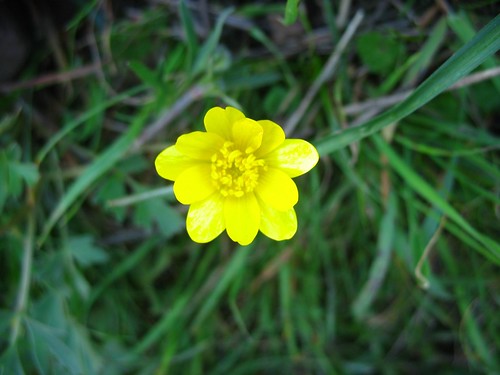
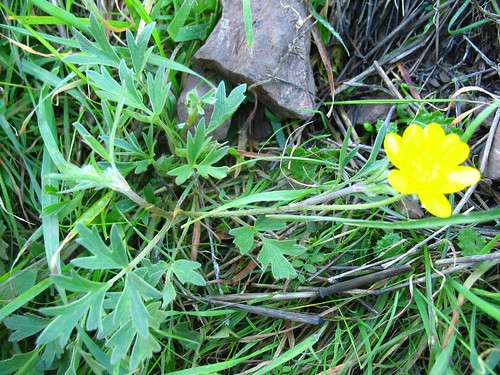
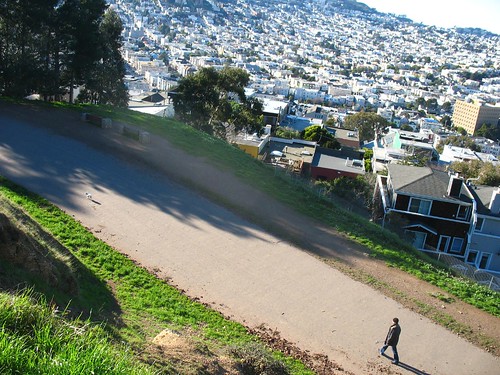
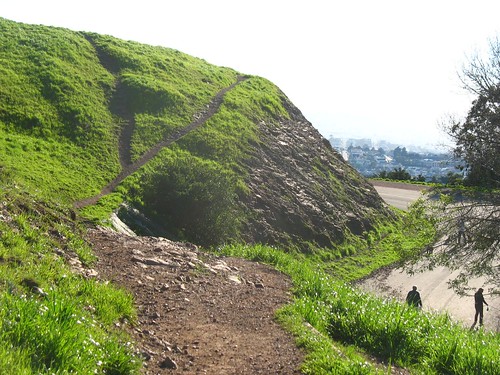

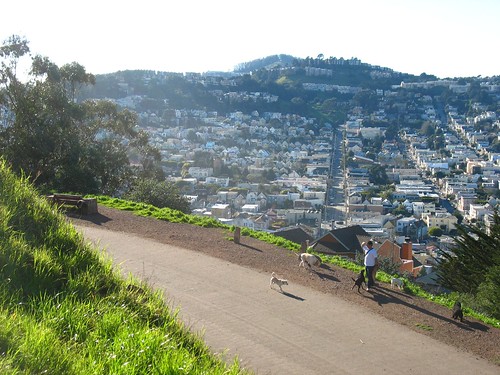
Holly Park.

Okay, seriously on my way home now.
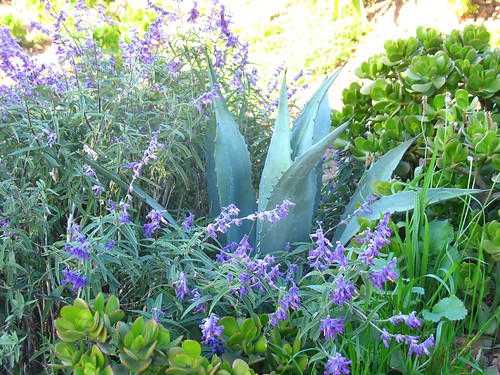
Euryops pectinatus. Love it or hate it? I go back and forth.

A really dead Agave americana.
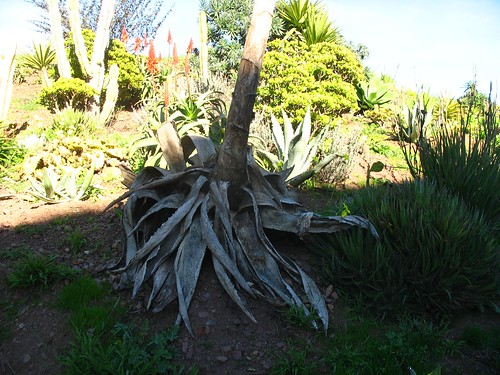
But still standing.
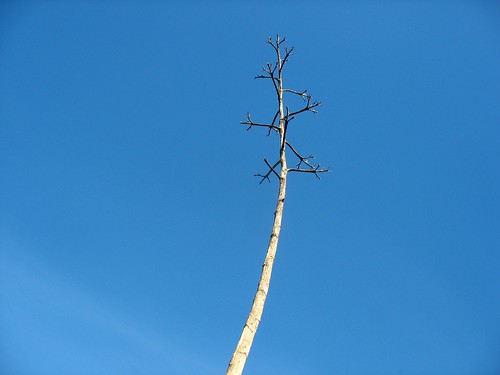
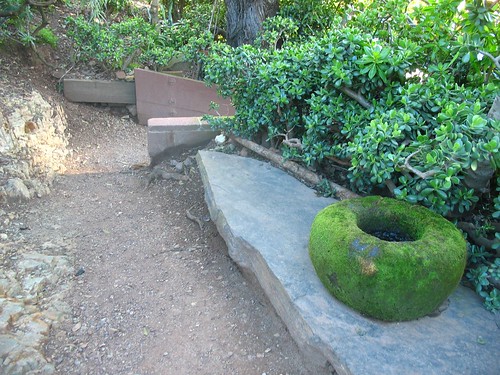
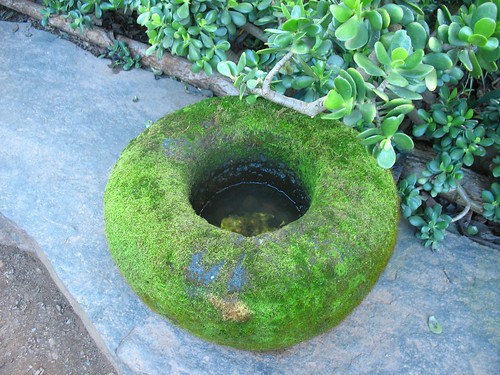
I've included pictures of this Aloe plicatilis many times. It's a nice container specimen, but takes a long time to get that way. It grows very slowly. This container cries out to be dressed up with some small perennials or annuals. What would you use? Something that mounds a little bit and then trails. Or maybe something that climbs a little bit. Something delicate to contrast with the coarse aloe.
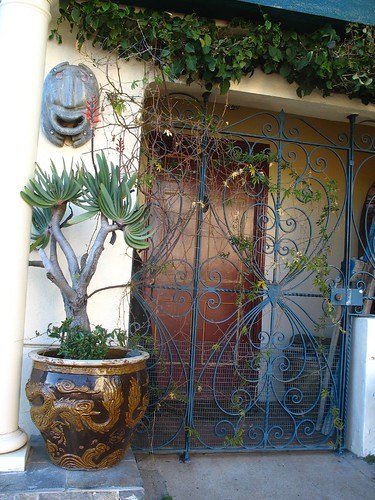
I don't think I've included a picture of this house on the blog before. This house is in the "marina style", I guess because there are a lot in the Marina District. It has one of my favorite layouts inside. There's a front room, and then it's split down the center, with three rooms and a bathroom down one side and a kitchen and dining room down the other side.

This house was obviously remodeled.
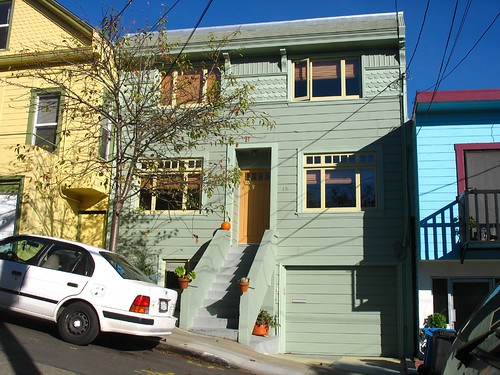
A remodel underway. I wonder if they had to go through hell and high water to get a third story added.
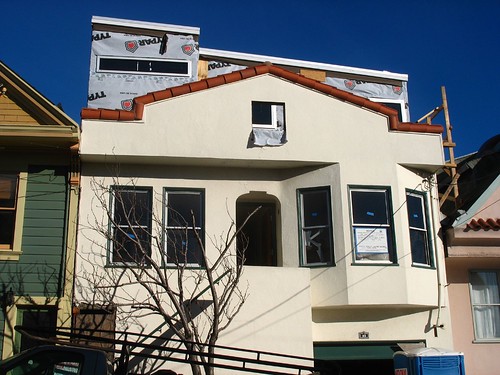
I think this must be a very old house to be right up on the street like that.

This is one of my favorite houses from the outside. I'd love to see the inside some day.
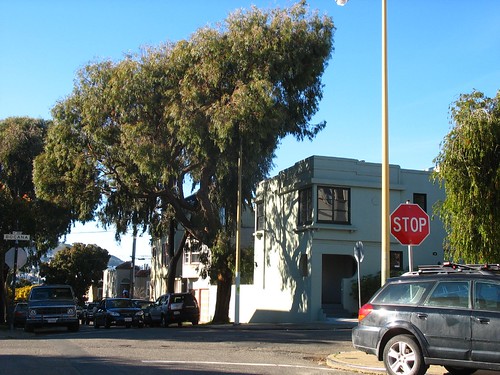

Anisodontea capensis. I've been falling in love with this shrubby mallow lately.
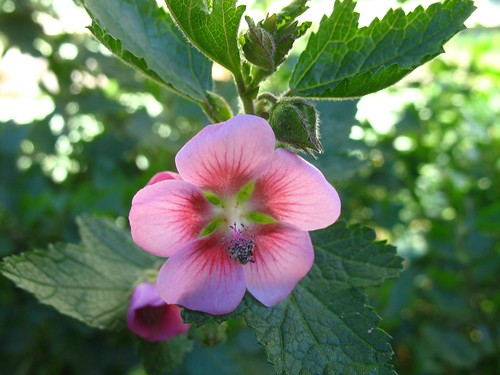
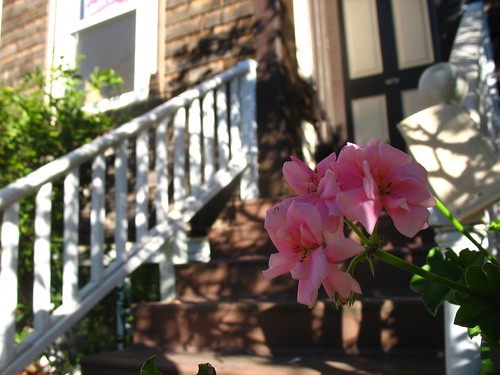

Street trees are always getting whacked. This looks like cleaned-up storm damage, or day laborer maintenance pruning.
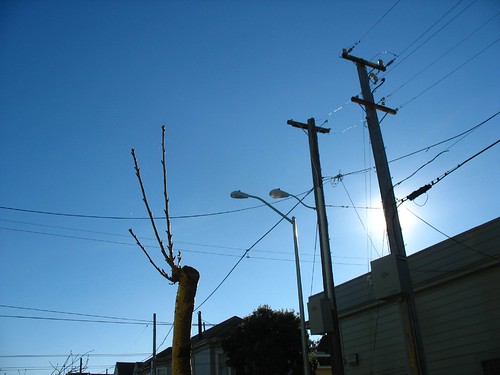
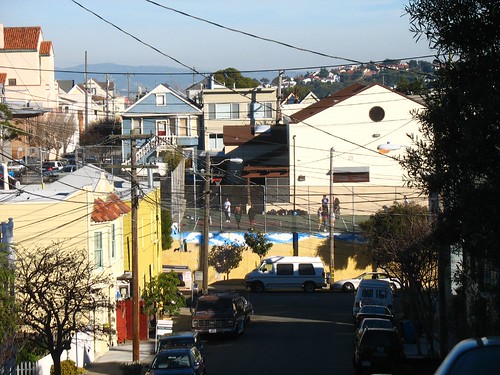
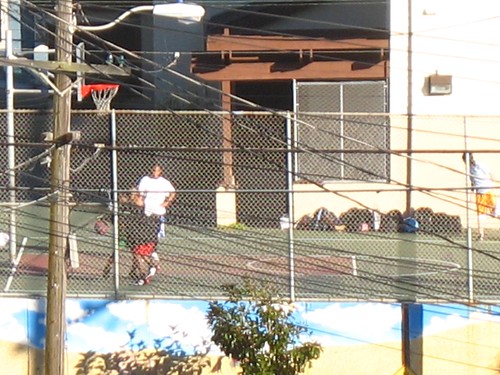
Finally, some good oxalis. Oxalis oregana, Redwood Sorrel. This grows in the deep shade of coast redwood forests. Big clover leaves, beautiful texture. I use it as a groundcver next to a north-facing wall with Salal, Huckleberry, and...Spice Bush.
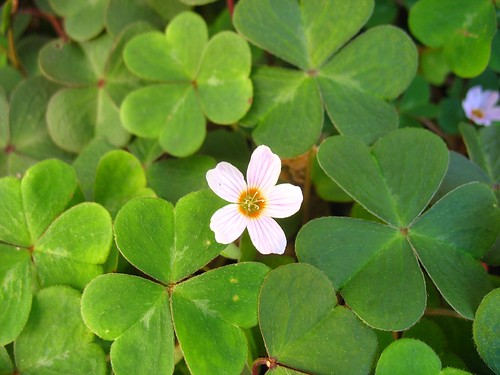
C'est tout. Here's where the story ends.

14 comments:
Love that tour! The city looks so pretty in your pictures. I am not a city girl but I do love to vacation in cities! The dragon pot is great. How about underplanting with Carex braunii? The color would match the pot and the texture would be cool!
Those plants on the north side of the hill are Footsteps of Spring (Sanicula arctopoides) and Soap Plant (Chlorogalum sp.), both CA natives.
Are you sure that's Chlorogalum? I don't visualize the leaves coming out in a whorl like that. Thanks for the word about Sanicula arctopoides!
Great post, you have little bit of everything. Community gardens are great for experimenting before bringing it to your garden. I wish I had one in my town.
I'm pretty sure about Chlorogalum, though it'd be easier to tell if it was flowering. Punch "chlorogalum" in at Calflora (http://calphotos.berkeley.edu/) and you'll see a few pictures of it's foliage. There are good ones on the second page. For some reason the server won't let you follow a link right to the chlorogalum page.
I think you're right. I've had Chlorogalum in my garden before, and I'm certainly familiar with seeing it in other gardens. I tend to think of the foliage being narrower and strappier than the sample I blogged, and also emerging oppositely. The leaves on the plant in the picture are definitely wavy like Chlorogalum.
Thanks, Chuck! This post prompted a long-overdue conversation with my husband.
Me: "Who's better: the Sundays or the Cranberries?"
Him: "The Sundays, totally. The Cranberries blow."
Me: "Yes, exactly. Thank you."
However, you are wrong to describe Oxalis oreganus as "good."
It is BAD! It grows in the smallest little cracks, and it's tiny spidery roots are nearly impossible to pull.
If it didn't wither under a clove/vinegar mix, it would earn a spot in the axis of evil (Himalayan blackberry / English ivy / morning glory).
My husband and I also agree on that point.
Really?! But it's a treasured native ground cover for deep shade! Too funny.
I'm sorry to tell you you're going to encounter it at my house when you visit.
OK, never mind. I made two errors.
1) I typed "it's" instead of "its."
2) I was thinking that the horrible Oxalis was oreganum, when really it's corniculata. Hateful plant!
Thanks for yet another delightful tour of SF. I love the "off the beaten track" views!
I've missed your long rambling walks! Thanks, Chuck b. :)
Hi Chuck, Risking possible scorn, what about using Bacopa for your Aloe plicatilis? It could handle the dryness...Love to see Bernal Heights documented so artfully.
Yeah, I like bacopa! And I like Layanee's carex idea too. I hadn't thought of grasses. Just to be clear, that's not my Aloe plicatilis.
Post a Comment